Words that have blends and digraphs can be a little tricky for kiddos. Typically kids are ready for them when they can read {and spell most} CVC words.
Reading and spelling words with blends and digraphs requires kids to listen very closely to each individual sound in words {called phonemes.} And sometimes it helps to have a little extra support to do this.
*This post contains affiliate links.
Blends and Digraphs – What Are They?
Blends and digraphs can be tricky for adults, too. I probably get asked about 1-2 times a month what they are and what the difference is between the two. So, let’s stop for a moment and explore both. To do so, I have two FREE “posters” I created that can help to clarify the difference between blends and digraphs.
Blend = TWO LETTERS {occasionally three letters}, PUT TOGETHER, AND YOU HEAR BOTH SOUNDS. {You can download this poster in this post.}
Some examples of beginning blends are bl-, sc-, or gr-. Blends can also be at the end of words, such as –nd, -st, or -mp. I like to start with words that have EITHER a beginning OR ending blend, but NOT both when introducing blends. For example, a word like stump contains a beginning blend {st-} and ending blend {-mp} and may be too difficult for a child just learning about blends.
Digraph = TWO LETTERS, PUT TOGETHER, AND YOU HEAR ONE SOUND. {You can download this poster in this post.}
Some common digraphs are ch, ph, sh, th and wh. Some digraphs can be found at the beginning or end of words {such as sh, th, and ph} while others, like kn, are typically only found at the beginning. When I introduce digraphs, I also focus on either the beginning digraphs or the ending digraphs, not words that have both.
Common Blends and Digraphs Chart for Kids
My Kindergartner does a good job of reading blends and digraphs in words for the most part, but he isn’t consistently spelling them in his writing just yet. Blends have been easier for him, as they typically are {because you can hear both sounds}, than digraphs.
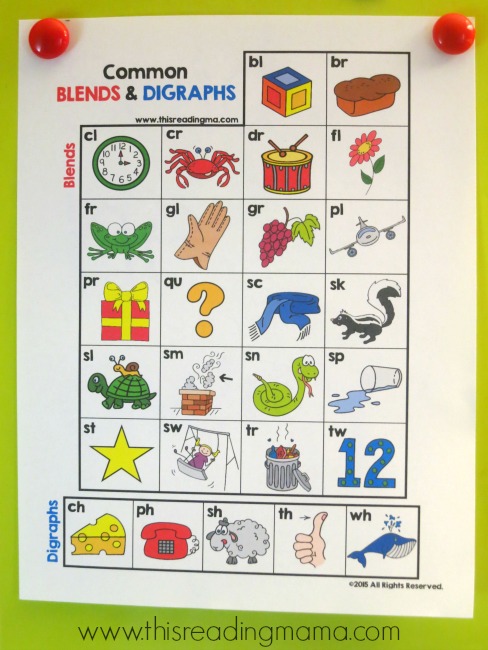
So, I created a 1-page reference chart of blends and digraphs for him to give a little support when needed. {The free download is at the end of this post and contains a color chart and a black/white chart.}
Ways to Use the Chart
1. Introduce the chart. The first thing I did was review blends and digraphs with him by talking about what they sound like {blends make two individual sounds and digraphs make one sound.} We looked at each image and he named them. We listened for the blend or digraph in the word.
2. Play a sound game. For this game, I asked him to bring one of his favorite small toys. I said, “We’re going to play a listening game. I’m going to say a word that starts the same as one of these words. You need to listen to the word, then find the picture {starting with either a blend or digraph} on the chart that starts with the same sound(s).
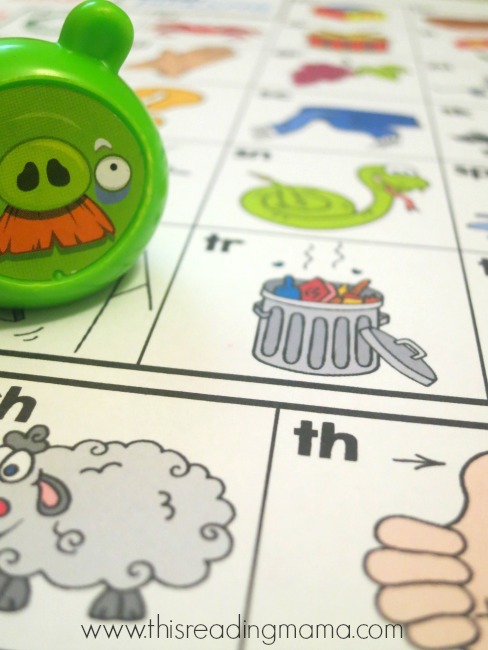
“For example, if I said plate, you would say that word slowly, p-l-a-t {making long a sound} and listen for the first sounds you heard. Hmmm…sounds like p-l, so you would put the toy on the plane in the chart because it also starts with p-l.” I followed up with two more examples and by the third example, he was answering for me, so I knew he was ready to try.
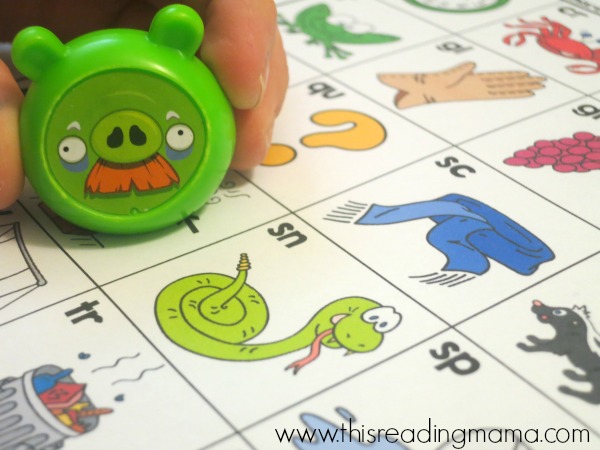
We played this listening game for about 10 rounds. The digraphs were definitely trickier for him, as expected. We will play this game another time.
3. Use it during writing OR reading time as a reference to remember sounds. This comes in handy especially during writing time for my little guy. I am absolutely blown away at how he has learned to crack the code of phonics in his reading. And I’ve been amazed at his spelling, too, but spelling almost always lags behind reading, as I explain in my ebook, Teaching Kids to Spell.
So, he can use it as a reference when spelling words. Just like in our listening game {#2}, when he gets to a word that has a blend or digraph, he can find the corresponding picture on the chart to help him spell {like in the word snowman.}
4. Display it at his desk. I have displayed his chart where he can easily see it and access it, if he needs. I think this is an important step that we sometimes forget. Instead of throwing it away {or placing it in a “done” pile}, make sure it’s accessible to kids. If you’re a classroom teacher, a reading or writing folder would be a great place for the chart. Or perhaps at a reading or writing center area.
~Becky
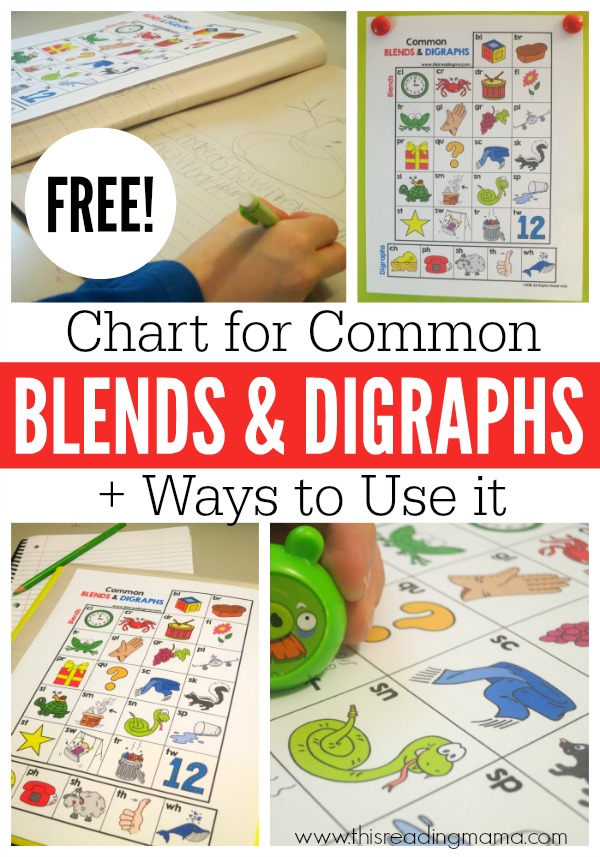
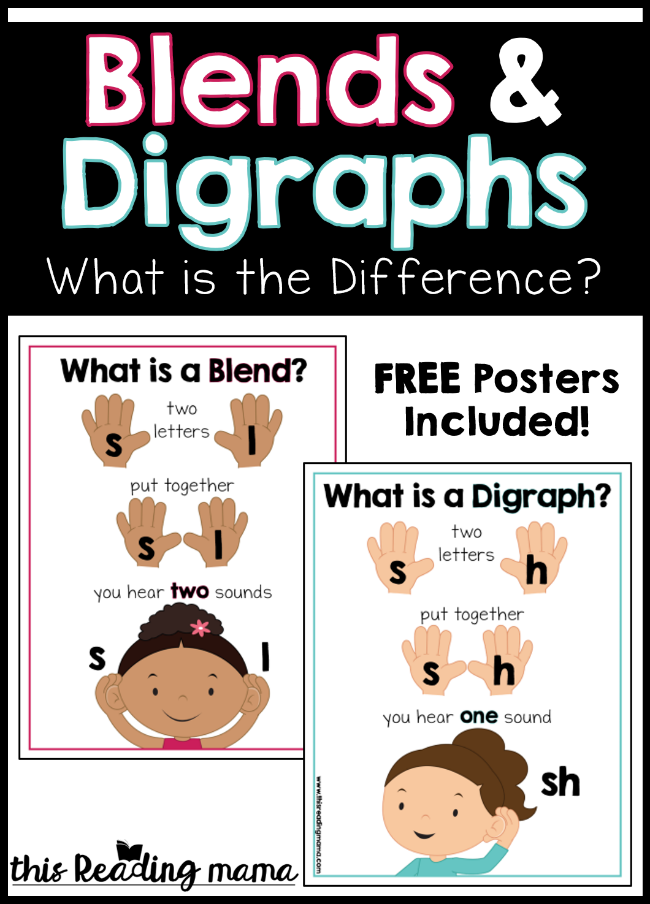

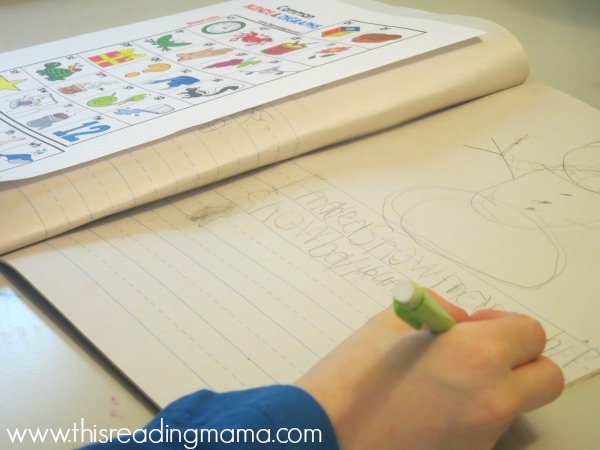
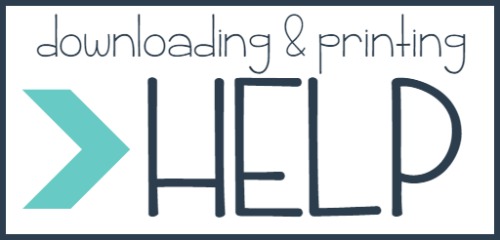
Thank you for this printable! I thought you would want to know that you have your url under the title as this reading “ma” instead of mama.
Ha! I guess that’s what I get for working on little sleep. 🙂 Thanks.
Oh my goodness this is brilliant, thank you so much. I love reading and my (learning to read) daughter loves reading but let’s be honest – the English language is quirky! This chart will be so helpful in keeping up the momentum :).
Love it! Thanks for sharing.
Love it! I was looking for this. Thanks for your help.
Thank you for creating and sharing such a great resource!
I just can’t seem to access anything on this website, even though I have signed up and received the password of spell19. I have wanted to download >>DOWNLOAD OUR FREE BLENDS AND DIGRAPHS CHART HERE.<< every time I tap on it nothing happens. What I I doing wrong?
Try using a different internet browser to see if that works.
HI There, For some reason I am not able to find the correct link to print your blend digraph chart. Help!
It’s at the very bottom of the post. 🙂
Thank you so much for helping me gain confidence in teaching phonics. I’m a kindergarten teacher and phonics is still new to me. I have a niece in 1st grade and I was like I need help teaching her to spell and learn patterns for long vowel sounds. I just want to thank you for the resources to be able to use at home. Thank you!
You’re welcome! 🙂
Is qu a blend or a diagraph? It follows the “two letters together that make two sounds (/k/ /w/)” but not “two letters together where each hold their own sound.”
That’s a great question! I’ve always included it under blends. Some people include it under digraphs. I think it’s one of those “oddballs” that could really fit under either for different reasons. If you’d like to teach it as an “oddball,” go right ahead. Is that clear as mud? 😉
I love all your materials. It’s easy to use and helpful. Thank you for sharing. God bless you!
You’re welcome! 🙂
Bless you for this!!! My daughter is (understandably) hating busy work and isn’t quite “getting” some phonics concepts. This helps so much!
Loved it!!
Hi. I’ve been teaching digraphs as “two letters that come together and make a new sound” for years. But I really like how you’ve phrased it above, “two letter put together and you hear one sound”. It makes more sense for digraphs like wh, kn, gn, and ck. Thank you!